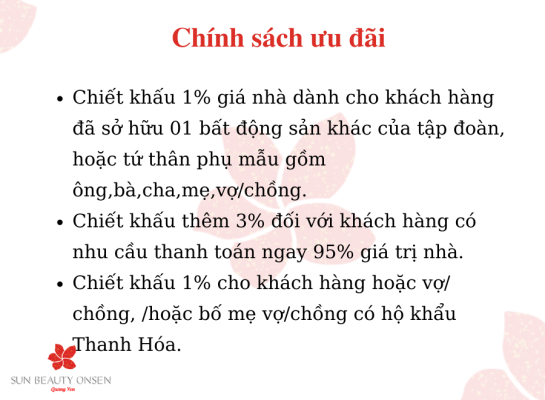- Cluck & Cash: Navigate the Lines, Maximize Multipliers & Conquer the Chicken Road Game for Massive Payouts!
- Understanding the Core Mechanics of the Chicken Road Game
- The Role of Risk Tolerance and Strategy
- Difficulty Levels and RTP (Return to Player)
- Navigating the Different Difficulty Levels
- Betting Ranges, Maximum Payouts, and Bankroll Management
- Advanced Strategies and Auto-Cashout Features
- The Psychological Aspect of the Chicken Road Game
Cluck & Cash: Navigate the Lines, Maximize Multipliers & Conquer the Chicken Road Game for Massive Payouts!
The world of online casinos is constantly evolving, with new and innovative games appearing regularly. Among these, crash games have gained significant popularity due to their simple yet exhilarating gameplay. One such game that’s captivating players is the chicken road game, a visually appealing and potentially lucrative experience. This game combines elements of risk and reward, offering a unique challenge for both novice and experienced casino enthusiasts. It’s a fast-paced game that demands quick decision-making and a strong understanding of probability.
The appeal lies in its straightforward mechanics: a chicken relentlessly progresses along a series of lines, and a multiplier increases with each step it takes. Players can cash out at any moment, securing their winnings, but if the chicken crashes before they do, their stake is lost. This inherent risk creates an addictive loop, keeping players on the edge of their seats.
Understanding the Core Mechanics of the Chicken Road Game
At its heart, the chicken road game is a game of chance, but skilled players can employ strategies to maximize their returns. The core mechanic revolves around the chicken’s ascension along a series of escalating lines. As the chicken progresses, a multiplier increases proportionally. The ultimate goal is to cash out before the chicken inevitably ‘crashes,’ or falls off the road, resulting in the loss of the bet.
The game offers an attractive user interface that allows for quick and easy navigation. Players can set their desired stake amount and auto-cashout multiplier, automating a portion of the decision-making process. This is especially useful for those who prefer a more passive gaming experience. Familiarization with the interface is essential for effective gameplay.
The perceived simplicity of the game hides a layer of probabilistic calculation. Players must weigh their desired risk tolerance against the potential reward. Higher multipliers naturally carry greater risk, while lower multipliers offer a more conservative approach. Understanding odds and expected value is crucial for long-term success.
The Role of Risk Tolerance and Strategy
A player’s risk tolerance significantly influences their playing style within the chicken road game. Conservative players might opt for frequent, smaller cashouts, aiming to secure consistent profits. Conversely, risk-seeking players might hold on for larger multipliers, accepting the increased probability of a crash. Neither approach is inherently superior; it all depends on individual preferences and bankroll management.
Developing a solid strategy involves analyzing past game results and identifying patterns. While results are ultimately random, observing trends can provide valuable insights. Some players swear by setting pre-defined auto-cashout multipliers, while others prefer to manually cash out based on their intuition. The effective strategy is the one that aligns with the player’s temperament and financial goals.
Difficulty Levels and RTP (Return to Player)
The chicken road game often features varying difficulty levels, each offering a unique risk-reward profile. Typically, these levels are categorized as Easy, Medium, Hard, and Hardcore. Each level alters the number of lines the chicken traverses, and accordingly, the probability of a crash. Easy mode often features 25 lines, while Hardcore mode might offer only 15. The RTP, or Return to Player, is generally set at 98%, meaning that, on average, 98% of all wagered money is returned to players over the long run.
Navigating the Different Difficulty Levels
Understanding the nuances of each difficulty level is crucial for informed gameplay. The ‘Easy’ mode provides a more forgiving experience, suitable for beginners. The chicken navigates 25 lines, and the risk of crashing on each step is relatively low (approximately 1/25). As you progress to ‘Medium’ (22 lines, 3/25 risk), ‘Hard’ (20 lines, 5/25 risk), and ‘Hardcore’ (15 lines, 10/25 risk), the challenge intensifies, but so do the potential rewards.
The ‘Hardcore’ mode, while incredibly risky, offers the highest potential payouts. The limited number of lines demands exceptional timing and a willingness to embrace uncertainty. Choosing a difficulty level should align with your risk tolerance and experience. Beginning with ‘Easy’ mode and gradually progressing to higher levels is often a recommended approach.
Here’s a quick breakdown of the risk/reward associated with each difficulty:
| Easy | 25 | 1/25 | Beginners, Conservative Players |
| Medium | 22 | 3/25 | Intermediate Players, Moderate Risk Tolerance |
| Hard | 20 | 5/25 | Experienced Players, Risk-Takers |
| Hardcore | 15 | 10/25 | High-Rollers, Extremely Risk-Tolerant |
Betting Ranges, Maximum Payouts, and Bankroll Management
The chicken road game typically accommodates a wide range of betting options, usually starting from as little as $0.01 and extending up to $200 per round. This accessibility caters to players with varying bankrolls. However, it’s essential to practice responsible gambling and only wager amounts you can afford to lose. The maximum payout can be substantial, often reaching up to $20,000 on the ‘Hard’ or ‘Hardcore’ modes at a multiplier of x100.
Effective bankroll management is paramount for sustained gameplay. A common strategy is to allocate a specific percentage of your bankroll to each session and to set loss limits. Never chase losses, and be prepared to walk away when you’ve reached your predetermined limits. This helps to protect your funds and prevent impulsive decisions.
Here’s a tiered bankroll management guide:
- Beginner ($50-$100): Bet 1-2% of bankroll per round, focus on the Easy and Medium modes.
- Intermediate ($100-$500): Bet 2-5% of bankroll, explore Medium and Hard modes.
- Advanced ($500+): Bet 5-10% of bankroll, experiment with Hard and Hardcore, utilize auto-cashout features.
Advanced Strategies and Auto-Cashout Features
Beyond basic risk assessment, more advanced strategies incorporate statistical analysis and pattern recognition. Some players meticulously track past crash patterns, attempting to identify subtle biases or recurring sequences. However, it’s important to note that the game utilizes a random number generator (RNG), making true predictability impossible. The auto-cashout feature is an invaluable tool for implementing automated strategies.
Setting pre-defined auto-cashout multipliers allows players to consistently secure profits without relying on manual intervention. For example, setting an auto-cashout at x2.0 ensures that you’ll always win at least twice your initial stake. Leveraging the auto-cashout feature can be particularly helpful during periods of intense gameplay or when multitasking.
- Martingale System (Caution Advised): Doubling your bet after each loss. High risk, requires a large bankroll.
- Anti-Martingale System: Increasing your bet after each win. Lower risk, potentially slower gains.
- Fixed Percentage Betting: Betting a consistent percentage of your bankroll with each round. A balanced approach.
The Psychological Aspect of the Chicken Road Game
The chicken road game isn’t just about mathematical probability; it also taps into psychological principles. The escalating multiplier creates a sense of anticipation and excitement, fueling a desire to push one’s luck. This can lead to impulsive decisions and potentially significant losses. Maintaining emotional control is critical for success.
Recognizing and managing your emotional state is paramount. Avoid playing when you’re feeling stressed, angry, or overly confident. The game is designed to be engaging, but it’s essential to remember that it’s ultimately a form of entertainment. Treat it as such, and avoid allowing it to negatively impact your financial or emotional well-being.



























